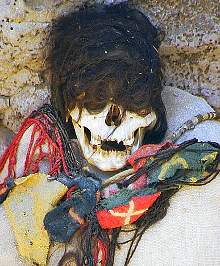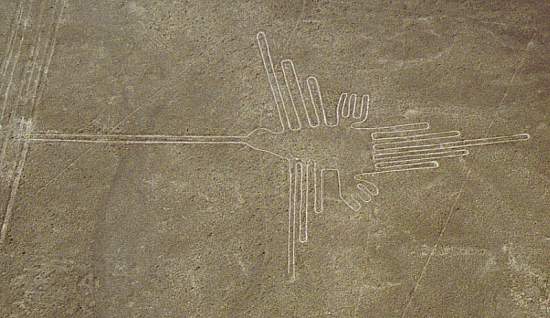






 | |
 |
|
The pre-Inca
Paracas culture developed along this stretch of Peru coastline in the last
centuries BC. It was succeeded further south by the Nazca culture
that flourished until around 600 AD. Gradually, most evidence of the
existence of these peoples was lost below the desert sands.
Many Paracas and Nazca graves have now been uncovered that contain
colorful ceramics and textiles along with skulls, bones and bodies that
have been preserved by natural mummification in the arid climate.
|
 |
|
Unusual
Paracas skulls. On the left is a skull deformed by binding the
growing head of an infant. The resulting domed head was considered
beautiful. On the right is a skull with a hole made by a primitive,
but apparently often survivable, surgical technique called trepanation.
Photographed in the Museo Regional de Ica. |
 |
|
A hummingbird
about 100 meters across drawn on the Nazca Pampa of Peru. Like the
many other animal motifs, it is drawn in a single, continuous line and can
only be seen properly from the air. |
BACK IN TOWN |
